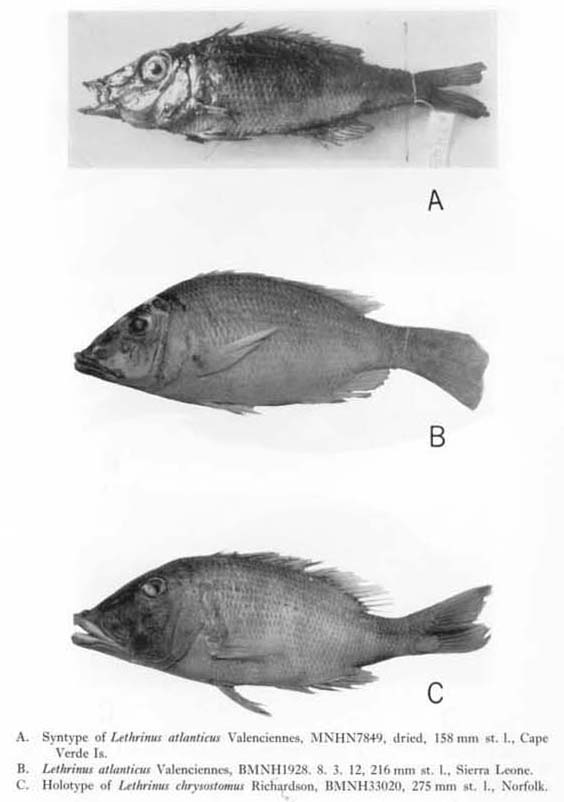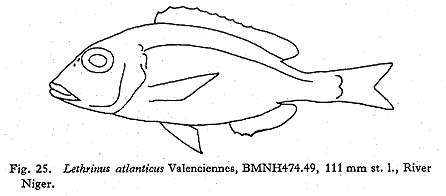V. DESCRIPTIONS
16. Lethrinus atlanticus Valenciennes
16. Lethrinus atlanticus Valenciennes |
 Plate 9 |
Lethrinus atlanticus Valenciennes in Cuvier & Valenciennes, 1830: 275, West Africa;Fowler, 1936: 846, fig. 366, Cape Verde Is.
Specimens examined.
Syntypes. —MNHN7849 (D, 158 mm standard length), 9806 (D, 361) from Cape Verde Is.
BMNH474. 49 (111) from River Niger.
BMNH1934, 10. 12. 12 (223) from Gold
Coast.
BMNH1928. 8. 3. 12 (216) Sierra Leone.
D. X, 9; A. III, 8; P1. 13; P2. I, 5; C. 8 + 7; L. lat. 45 to 47; Ltr. 5 or 6/i/12 to 14.
Proportional measurements of some specimens are shown in Table 16.

In younger individuals, head length equal to or more than body depth. In larger ones, body depth more than head length. End of jaws on the vertical through anterior or posterior nostril. Interorbital area flat or a little concave. Third to fifth dorsal spines longest. Longest anal ray about equal to soft anal base. 5 scale rows between lateral line and median dorsal spines. Inner base of pectoral without scales. Lateral teeth of jaws small and pointed, sometimes roundish.
Color. —The present author has not had any chance to observe the color when fresh. According to the previous works, this species does not have any particular color markings.
Distribution. —Along West African coast.
Remarks. —The dried syntypes in the Museum National d'Histoire Naturelle in Paris has been so much deformed that the present author used to suspect that there are two species in the Atlantic Ocean. Although a young fish has a rather slender body like L. reticulatus or L. semicinctus, the body of an adult is deep and resembles those of L. ramak or L. harak. The shape of teeth of this species is like that of L. ramak.
